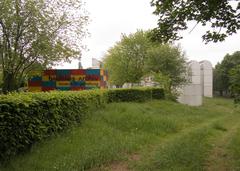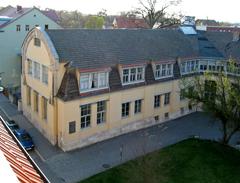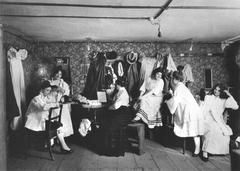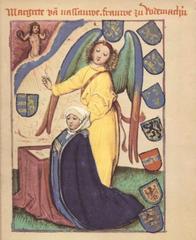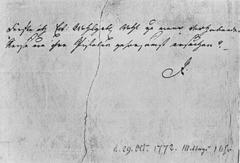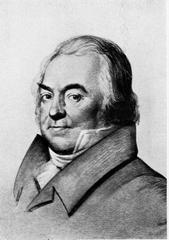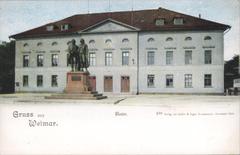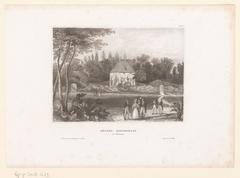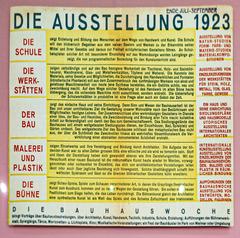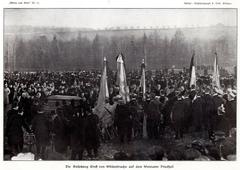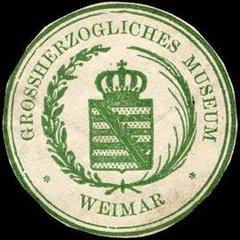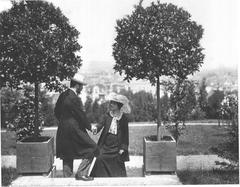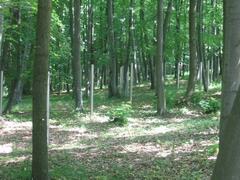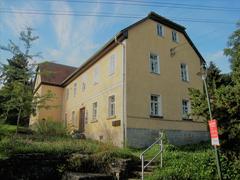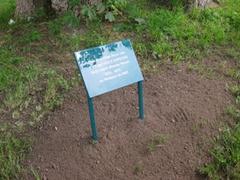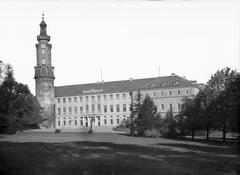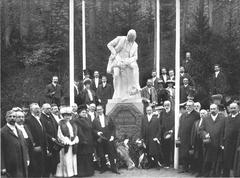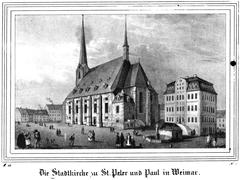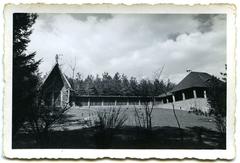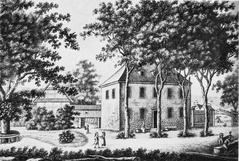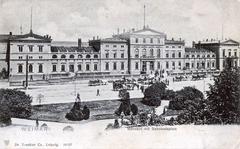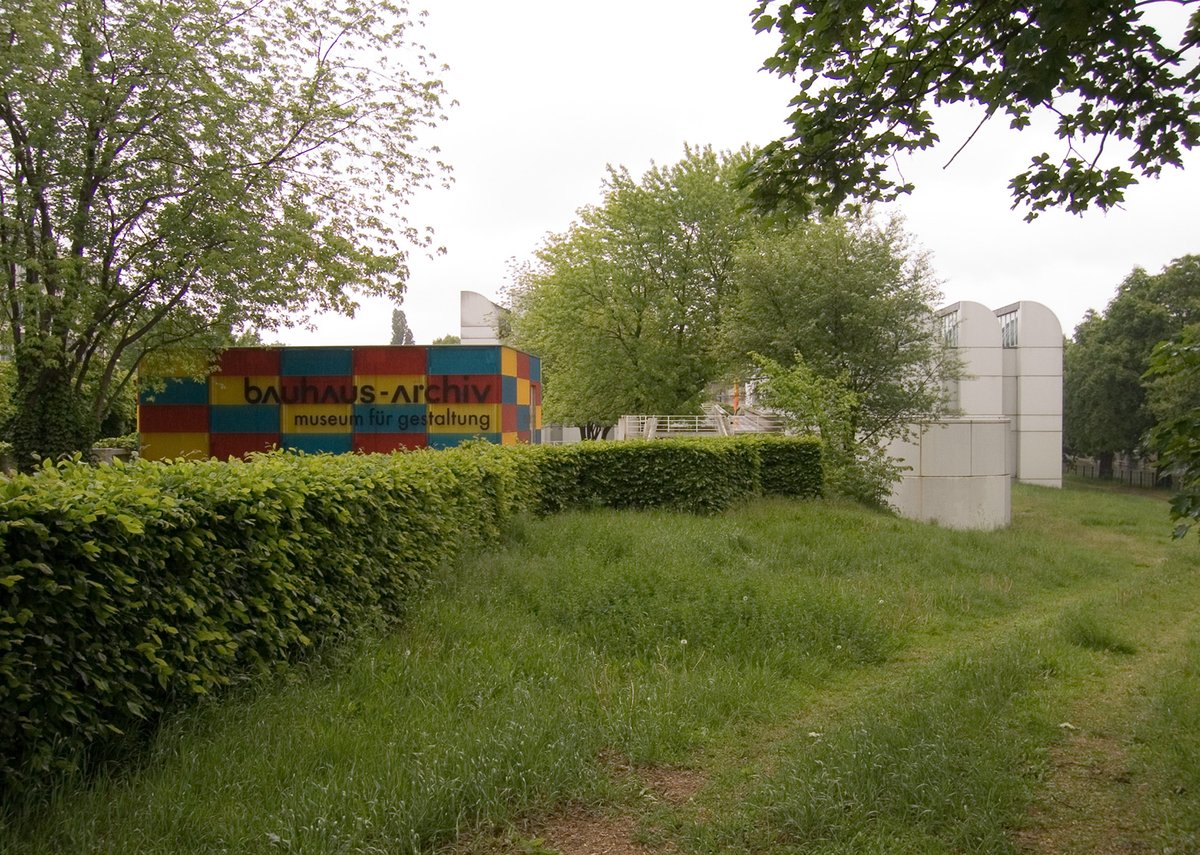
Bauhaus Museum Weimar: Visiting Hours, Tickets, and an In-Depth Guide to Weimar’s Historic Sites
Date: 15/06/2025
Introduction: The Bauhaus Museum Weimar and Its Significance
The Bauhaus Museum Weimar stands as a vital destination for anyone passionate about modern art, design, and architecture. As the birthplace of the Bauhaus movement—founded in 1919 by Walter Gropius—Weimar holds a unique position in 20th-century cultural innovation. Opened in 2019, the museum houses the world’s oldest and most comprehensive Bauhaus collection, with approximately 13,000 objects. Its striking contemporary architecture, designed by Heike Hanada, not only reflects the movement’s innovative spirit but also acknowledges the complex historical legacy of the Bauhaus in Weimar (Klassik Stiftung Weimar; tripbytrip.org).
The museum offers more than a chronological display; visitors experience immersive exhibitions, interactive workshops, and multimedia installations, all designed to engage with Bauhaus principles and their ongoing influence (Klassik Stiftung Weimar). The building itself, with its monolithic façade and rhythmic LED lighting, bridges the Bauhaus’s heritage with modern design sensibilities (Icon Eye; Klassik Stiftung Weimar).
Practical, accessible, and centrally located, the Bauhaus Museum Weimar is a starting point for exploring the broader historical and cultural context of Weimar, including landmarks such as the Haus am Horn, Bauhaus University Weimar, Goethe’s House, and Schiller’s Residence (weimar.de; AwayMag).
Contents
- Discovering Bauhaus Weimar: The Birthplace of Modern Design
- Origins of the Bauhaus in Weimar
- Educational Philosophy and Key Figures
- Bauhaus Weimar: 1919–1925 and Its Historic Exhibition
- Political Challenges and Relocation
- Enduring Legacy and Global Influence
- Essential Bauhaus Sites to Visit in Weimar
- Practical Visitor Information
- Visiting Hours and Tickets
- Guided Tours and Accessibility
- Travel Tips and Nearby Attractions
- Bauhaus Museum Weimar: Architectural Vision and Visitor Experience
- Architecture and Spatial Organization
- Accessibility and Visitor Services
- Exhibition Highlights and Multimedia
- Special Events and Photography Tips
- Insider Tips for Architecture Enthusiasts
- Permanent Collection and Special Exhibitions
- Interactive and Multimedia Experiences
- FAQs
- Conclusion and Planning Your Visit
- Sources
Discovering Bauhaus Weimar: The Birthplace of Modern Design
Weimar’s role as the cradle of the Bauhaus movement is central to the history of modern art and design. Founded in 1919, the Bauhaus revolutionized creative education by uniting art, craft, and technology. The museum and the city’s historical sites allow visitors to experience the origins, key figures, and enduring influence of this world-changing movement.
Origins of the Bauhaus in Weimar
In the wake of World War I, Walter Gropius envisioned a school in Weimar that would merge fine arts and applied arts to rebuild society through innovative design (tripbytrip.org; parametric-architecture.com). Weimar’s cultural landscape, deeply influenced by Enlightenment figures like Goethe and Schiller and institutions such as Henry van de Velde’s Kunstgewerbeschule, provided fertile ground for this experiment (weimar.de).
Educational Philosophy and Key Figures
The Bauhaus philosophy centered on combining artistic expression with practical, mass-producible form—summed up in the mantra “form follows function.” Students progressed from foundational courses (Vorkurs) to specialized workshops in areas including metalwork, ceramics, weaving, typography, and architecture (highsnobiety.com).
Notable figures:
- Walter Gropius (founder, director)
- Paul Klee (painter, color theorist)
- Wassily Kandinsky (abstract painter)
- Lyonel Feininger (printmaker)
- Marcel Breuer (furniture designer)
- Josef and Anni Albers (painter, textile artist)
- Marianne Brandt (metalwork designer)
- László Moholy-Nagy (photographer, designer)
These educators fostered interdisciplinary collaboration and experimentation (tripbytrip.org; highsnobiety.com).
Bauhaus Weimar: 1919–1925 and Its Historic Exhibition
From 1919 to 1925, Bauhaus Weimar was a hub for avant-garde creativity, producing iconic designs in furniture, ceramics, textiles, and graphics (the-passenger.de). The 1923 Bauhaus Exhibition introduced modernist ideas to the public and was staged across several Weimar sites, including the Haus am Horn (parametric-architecture.com).
Political Challenges and Relocation
Mounting political opposition and financial strain led to the Bauhaus’s forced relocation to Dessau in 1925, where Gropius designed a new building for its continued work (tripbytrip.org; highsnobiety.com). The rise of the Nazi regime ultimately resulted in the school’s closure in 1933 (the-passenger.de).
Enduring Legacy and Global Influence
Despite its brief time in Weimar, Bauhaus principles profoundly shaped modern design, architecture, and visual culture. Alumni such as Mies van der Rohe and Marcel Breuer spread Bauhaus ideals worldwide (artmovements.net; highsnobiety.com).
Essential Bauhaus Sites to Visit in Weimar
Weimar’s historical sites linked to Bauhaus are UNESCO World Heritage Sites (weimar.de):
- Bauhaus University Weimar (Main Building): Designed by van de Velde, this was the Bauhaus’s early home.
- Former School of Applied Arts: Another van de Velde design, central to Bauhaus education.
- Haus am Horn: The 1923 model house, a pioneering Bauhaus work, open to visitors.
- Bauhaus Museum Weimar: Opened in 2019, this museum displays over 13,000 Bauhaus objects (klassik-stiftung.de).
Practical Visitor Information
Visiting Hours and Tickets
- Bauhaus Museum Weimar: Tuesday–Sunday, 10:00–18:00; closed Mondays. Last admission: 30 minutes before closing.
- Haus am Horn: Typically open daily 10:00–17:00 (check official site for updates).
- Tickets:
- Adults: €10.00
- Reduced: €7.00
- Pupils (16–20 years): €4.00
- ModernismCard (combined ticket): €17.00
- BauhausCard (annual pass): €30.00
- Purchase online (official site) or at the entrance.
Guided Tours and Accessibility
- Guided tours are available in German and English. Advance booking is recommended.
- The museum and major Bauhaus sites are wheelchair accessible, with elevators and accessible restrooms.
Travel Tips and Nearby Attractions
- Weimar is easily reached by train or car; parking is available near major sites.
- Combine your museum visit with Goethe’s House, Schiller’s Residence, and Weimarhallenpark.
- For up-to-date information, check the official Bauhaus Museum Weimar website.
Bauhaus Museum Weimar: Architectural Vision and Visitor Experience
Architecture and Spatial Organization
Designed by Professor Heike Hanada, the museum’s minimalist cube shape employs exposed concrete, 24 horizontal LED light strips, and a windowless façade, creating a sculptural presence (Klassik Stiftung Weimar; Icon Eye).
Inside, the cascading “Himmelsleiter” staircase offers dramatic views, including a poignant sightline toward the Buchenwald Memorial.
Accessibility and Visitor Services
- Barrier-free entrances from both street and park
- Elevators serving all levels
- Staff assistance for visitors with special needs
Exhibition Highlights and Multimedia
- Permanent Collection: Over 13,000 objects, including the Wagenfeld lamp, Brandt teapot, and Breuer’s lattice chair (Klassik Stiftung Weimar).
- Permanent Exhibition: “The Bauhaus Comes from Weimar” explores how Bauhaus tackled questions of living, working, and social transformation.
- Special Exhibitions: Rotating displays on topics like Bauhaus under National Socialism and Oskar Schlemmer’s stage designs (Klassik Stiftung Weimar – Special Exhibitions).
Special Events and Photography Tips
- Regular workshops, lectures, and themed tours
- Non-flash photography is allowed; dusk visits offer the best views of illuminated façades
Insider Tips for Architecture Enthusiasts
- Visit at dusk to see the façade’s rhythmic LED illumination.
- Explore the “Himmelsleiter” staircase for unique interior perspectives.
- Use the Weimar+ app for in-depth digital guides.
Permanent Collection and Special Exhibitions
The museum’s collection, started by Gropius in the 1920s, features iconic design objects and documents the school’s experimental output (Artnet News). Temporary exhibitions address both historical and contemporary topics, ensuring a fresh experience with each visit (AwayMag).
Interactive and Multimedia Experiences
- Weimar+ App: Audio guides, short stories, curated highlights, and pre-visit planning (Klassik Stiftung Weimar).
- Workshops: Hands-on Werklabor activities, encouraging creative experimentation.
- Exhibition Design: Open, light-filled spaces, digital interactives, and multilingual resources (WhichMuseum).
FAQs
Q: What are the Bauhaus Museum Weimar opening hours?
A: Tuesday–Sunday, 10:00–18:00; closed Mondays. Check the official site for holiday hours.
Q: How can I buy tickets?
A: Online via the official website or at the entrance.
Q: Is the museum wheelchair accessible?
A: Yes, with elevators, barrier-free entrances, accessible restrooms, and assistance available.
Q: Are guided tours available?
A: Yes, in German and English; advanced booking is recommended.
Q: What other attractions are nearby?
A: Haus am Horn, Bauhaus University, Goethe’s House, Schiller’s Residence, and Weimarhallenpark.
Q: Are there activities for children and families?
A: Yes, interactive stations, the “bauhaus bag” program, and creative workshops are available (Bauhaus Cooperation).
Conclusion and Planning Your Visit
The Bauhaus Museum Weimar provides a comprehensive, engaging journey through the origins and enduring legacy of modern design. With its world-class collection, innovative exhibitions, and accessible, visitor-friendly amenities, it is a must-see for art lovers, architecture enthusiasts, and cultural travelers. Plan ahead by purchasing tickets online, downloading the Weimar+ app, and checking for special events or exhibitions. Take time to explore Weimar’s other historic sites for a deeper understanding of the cultural context that shaped the Bauhaus.
Visuals and Interactive Media
- Virtual Tour of the Bauhaus Museum Weimar
- Official Bauhaus Museum Weimar website
- Images available on the official website feature:
- Exterior of the Bauhaus Museum Weimar (Alt: Bauhaus Museum Weimar modern glass facade at Stéphane-Hessel-Platz)
- Bauhaus design icons on display (Alt: Iconic Bauhaus design pieces)
- Workshops in progress (Alt: Visitors participating in Bauhaus Museum Weimar Werklabor workshop)
- Map of Weimar sites (Alt: Map highlighting Bauhaus Museum Weimar and Weimar historical sites)
Sources
- This is a sample text. (tripbytrip.org)
- This is a sample text. (Klassik Stiftung Weimar)
- This is a sample text. (Icon Eye)
- This is a sample text. (AwayMag)
- This is a sample text. (eskapas.com)
- This is a sample text. (weimar.de)
- This is a sample text. (Artnet News)
- This is a sample text. (parametric-architecture.com)
- This is a sample text. (highsnobiety.com)
- This is a sample text. (the-passenger.de)
- This is a sample text. (artmovements.net)
- This is a sample text. (WhichMuseum)
- This is a sample text. (Bauhaus Cooperation)
